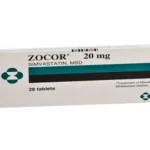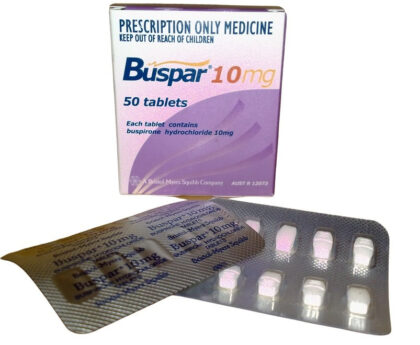Myambutol, the brand name for Ethambutol, is an antibiotic specifically used to treat tuberculosis (TB). It works by inhibiting the synthesis of the bacterial cell wall, preventing the bacteria from multiplying. Myambutol is typically prescribed as part of a combination therapy with other TB drugs to prevent the development of drug resistance. It is available in oral tablet form and is generally well-tolerated, though some patients may experience side effects such as vision changes, nausea, or rash. Regular eye exams are recommended during treatment, as Myambutol can cause optic neuritis in rare cases. It is crucial to take Myambutol exactly as prescribed and to complete the entire course of treatment to ensure the full eradication of the tuberculosis bacteria and to prevent the emergence of resistant strains.


Essential in TB Treatment
Myambutol is an essential medication in the treatment of tuberculosis (TB), particularly because of its role in preventing the development of drug-resistant TB. By inhibiting the growth of TB bacteria, Myambutol enhances the effectiveness of other TB drugs when used in combination therapy. Its proven efficacy in treating TB makes it a critical component of the standard TB treatment regimen.

Well-Tolerated
Myambutol is generally well-tolerated by most patients, with mild side effects being the most common. Its safety profile allows it to be used effectively over long treatment periods, which is crucial in TB therapy. This makes Myambutol a reliable option for patients undergoing the prolonged treatment necessary to fully eradicate tuberculosis and prevent relapse or resistance.

Prevention of Resistance
Myambutol plays a key role in the prevention of drug-resistant tuberculosis. When used in combination with other TB drugs, it helps ensure that the tuberculosis bacteria are fully eradicated, reducing the likelihood of the bacteria developing resistance. This makes Myambutol an indispensable part of TB treatment, ensuring long-term effectiveness of therapy.
Myambutol – Product Description
Overview:
Myambutol (Ethambutol) is a crucial antibiotic used primarily in the treatment of tuberculosis (TB). It works by inhibiting the synthesis of the bacterial cell wall, thereby stopping the bacteria from multiplying. Typically, Myambutol is used in combination with other TB medications to prevent the emergence of drug-resistant TB strains. This combination therapy is essential in the successful treatment of tuberculosis, which requires prolonged medication. Myambutol is generally well-tolerated, but regular eye exams are recommended during treatment due to the rare possibility of optic neuritis. Adherence to the prescribed regimen is vital to ensure the effectiveness of the treatment and to prevent the recurrence of TB.
Indications:
Myambutol is indicated primarily for the treatment of tuberculosis (TB). It is used in combination with other antitubercular drugs to treat both active TB and latent TB infections, particularly in cases where resistance to other drugs is a concern. Myambutol’s ability to inhibit the growth of TB bacteria makes it a key part of the treatment regimen. It is also used in certain cases to treat Mycobacterium avium complex (MAC) infections, which are similar to TB. Myambutol’s use in combination therapy is essential to prevent the development of drug-resistant strains of TB, ensuring the success of the treatment.
How to Use:
Myambutol should be taken exactly as prescribed by a healthcare provider. It is typically administered orally, with the dosage depending on the patient’s weight and the severity of the infection. The medication is usually taken once daily and should be continued for the full duration prescribed, even if symptoms improve before the treatment is completed. Regular eye exams are recommended during treatment, as Myambutol can cause vision changes in rare cases. Patients should report any changes in vision immediately. It is crucial to follow the prescribed treatment regimen to ensure the complete eradication of tuberculosis bacteria and to prevent the development of drug-resistant TB.
Advantages:
Myambutol offers several advantages in the treatment of tuberculosis. Its ability to prevent the development of drug-resistant TB strains when used in combination therapy makes it a critical component of TB treatment. Additionally, Myambutol’s well-tolerated nature allows it to be used effectively over the long course of TB therapy. Its specific action against TB bacteria makes it highly effective in ensuring the complete eradication of the infection.
Conclusion:
Myambutol (Ethambutol) is a vital antibiotic in the fight against tuberculosis, particularly due to its role in preventing drug resistance. When used as part of a combination therapy, Myambutol ensures that TB bacteria are fully eradicated, reducing the risk of treatment failure. While generally well-tolerated, patients should be vigilant about potential side effects, especially changes in vision. Adhering to the full course of treatment is essential for successful TB management and for preventing the emergence of resistant strains.
Composition:
Myambutol contains Ethambutol hydrochloride as its active ingredient, an antibiotic specifically effective against Mycobacterium tuberculosis. Inactive ingredients in the tablet may include substances like magnesium stearate, microcrystalline cellulose, and povidone, which contribute to the stability and effectiveness of the medication. The formulation ensures that the active ingredient is delivered effectively to combat TB bacteria, making Myambutol a crucial part of the standard TB treatment regimen.
Note:
Patients taking Myambutol should be aware of the importance of regular eye exams during treatment, as the drug can, in rare cases, cause optic neuritis, leading to vision changes. It is crucial to inform the healthcare provider of any vision problems that arise during treatment. Additionally, patients should adhere strictly to the prescribed treatment regimen to avoid the risk of drug-resistant TB. Myambutol should not be discontinued without consulting a healthcare provider, even if symptoms improve, as doing so may result in incomplete treatment and potential relapse.
Myambutol: Essential Antibiotic for Effective Tuberculosis Treatment
In this informative video, we explore Myambutol.
Why us?

Authenticity Guaranteed:
We ensure that every batch of Capoten is sourced from trusted manufacturers, providing you with genuine medication that meets the highest quality standards.

Competitive Pricing:
Our pricing is designed to make essential medications like Capoten accessible to all, offering competitive rates and frequent discounts to help you manage your health affordably.




